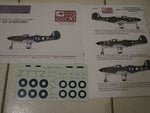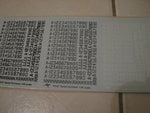N4521U
Plastic Pirate
View attachment P51 dimensioned dwg.pdfView attachment P51 dimensions particulars.pdf
Here are two pdf's.
Dwg pdf shows an offset of just one degree.
Dimension pdf if you look under range of movement shows one degree for vertical stab.
I found all this out when I did some artwork for a Mustang called Bernie's Bo, Bob Loves old P-51-D.
Here are two pdf's.
Dwg pdf shows an offset of just one degree.
Dimension pdf if you look under range of movement shows one degree for vertical stab.
I found all this out when I did some artwork for a Mustang called Bernie's Bo, Bob Loves old P-51-D.


